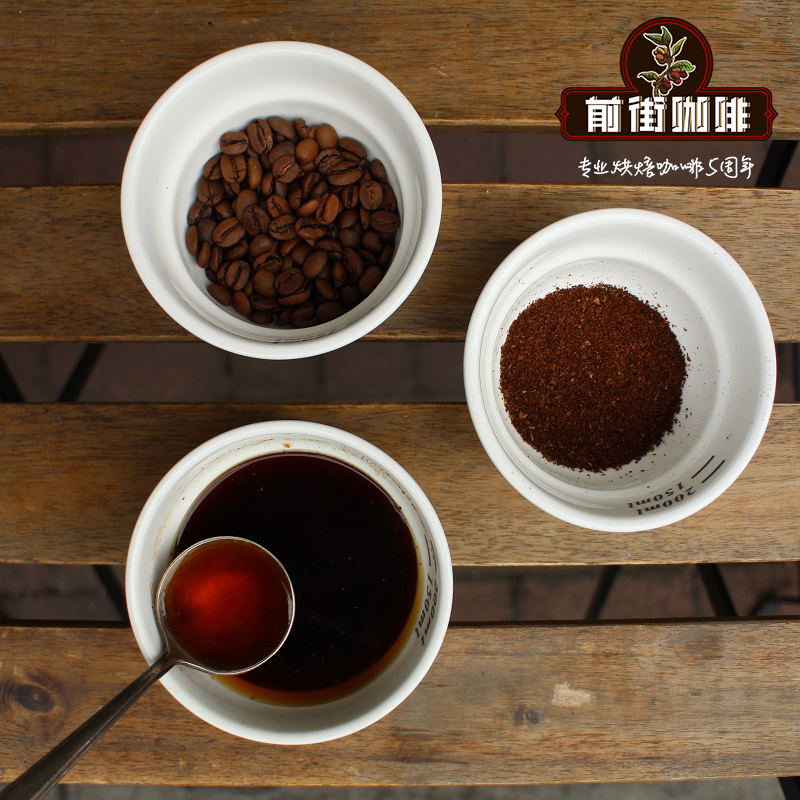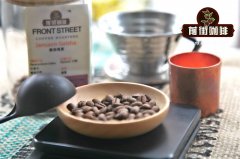Coffee Research sharing: analysis of volatile components of Coffee beans in Yunnan

Professional coffee knowledge exchange more coffee bean information please follow the coffee workshop (Wechat official account cafe_style)
Pu'er, Baoshan, Lincang and Dehong in Yunnan are the main coffee producing areas in China, and their planting area and output account for more than 98% of the country's total. The chemical components in raw coffee beans can form the unique flavor of coffee due to a series of roasting reactions such as Maillard and caramelization. At present, most of the volatile compounds in coffee have been identified by foreign scientists, and the characteristic aroma substances of coffee have been studied. Gonzalez-Rios O et al. used solvent selection combined with GC / MS to analyze the volatile compounds in raw coffee beans, and identified 62 kinds of volatile compounds. CzernyM et al analyzed 28 kinds of strong aroma substances in coffee and quantified them by stable isotope dilution analysis. the results showed that the loss of 2d3-butanedione, 2d3-pentanedione and vanillin had no significant effect on the overall aroma. However, the domestic research on coffee is mainly focused on adaptive cultivation, high-yield cultivation, pest and pest research, disease resistance breeding and so on, but there are few studies on the volatile components of coffee. In particular, the chemical basis of coffee aroma differences in Yunnan and the characteristic aroma substances of roasted coffee beans are not clear.
Because of the strong regional nature of coffee cultivation, the planting climate has a great influence on the aroma of coffee. In this study, using Yunnan Pu'er, Baoshan and Lincang coffee with three different climatic characteristics as raw materials, HS-SPME/GC-MS was used to analyze the volatile components, principal component analysis and cluster analysis were used to distinguish the samples, looking for characteristic compounds that had great influence on coffee aroma in different regions, so as to provide a theoretical basis for the development of coffee industry in Yunnan.
Experimental methods:
Preparation of roasted beans weighing 100.00g raw coffee beans in a drum coffee roaster, the initial temperature is 150C, the constant firepower is 6.5and the baking time is 12min to obtain moderate roasted beans, which are quickly cooled to room temperature. The color value L determined by colorimeter was 42.00 after crushing and passing through 40 mesh sieve. Store roasted coffee beans in-40 °C freezer and set aside. Under HS-SPME condition, 1.00g powder sample was weighed in 20mL sampling bottle, sealed, and preheated 20min in constant temperature water bath. The extraction head was inserted into the sampling bottle and adsorbed for a specific time, and the 3min was desorbed at the GC-MS injection port. The optimum extraction conditions of HS-SPME were selected by single factor experiment: extraction head: when the sample volume was 0.80g, the extraction temperature was 50 °C and the extraction time was 40min, the other conditions were unchanged. The effects of 65 μ m DVB / DVB, 75 μ m CAR/PDMS and 50 / 30 μ m DVB / CAR/PDMS on the extraction efficiency were investigated. Extraction temperature: when the extraction head is 75 μ m CAR/PDMS, the sample volume is 0.80g, the extraction time 40min is the same, the effects of extraction temperature 40, 50, 60, 70, 80 °C on the extraction effect are investigated, and the extraction time is 75 μ m CAR/PDMS, sample volume 0.80 g, extraction temperature 60 °C. the effects of extraction time 10, 20, 30, 40, 50min on the extraction effect are investigated. Sample quantity: when the extraction head was 75 μ m CAR / PDMS, the extraction temperature was 60 °C, the extraction time was 30min, and the other conditions were unchanged. The effects of sample volume 0.25,0.50,0.75,1.00,1.25,1.50g on the extraction effect were investigated. At the same time, reproducibility experiments were carried out to test the reliability of the method.
By comparing with the NIST 08 spectral library, the compounds with a matching degree of more than 85% were selected, and their retention indexes were calculated and compared with the literature, so as to realize the qualitative analysis of volatile substances. The peak area normalization method was used for quantitative analysis. Statistical analysis was run on the MATLAB R2010a platform.
Principal component analysis (PCA) was carried out in different producing areas of Yunnan through a series of academic experiments. PCA is applied to the data matrix of volatile substances (9 samples × 10 variables) to reduce the dimension of the data set and to explore the sources of differences among samples from different regions. The PCA projection and load maps are shown in figure 7. The variance contribution rate of the first two principal components is 96.3%, of which the contribution rates of PC1 and PC2 are 60.8% and 35.5%, respectively. In PC1 direction, the scores of Pu'er samples are negative, and the scores of Lincang and Baoshan are positive, the boundaries of Pu'er (blue upper triangle) and Lincang (magenta right triangle) and Baoshan samples (green lower triangle) are obvious in PC1 direction, while those of Lincang and Baoshan samples overlap partially in PC2 direction, and the three regional samples can be distinguished by projection in PC2 direction. According to the load diagram, the aroma substances which make great contribution to the classification of samples in different regions can be found. It can be seen from figure 7 that acids have a high correlation with samples in Pu'er area, which can be used to distinguish Pu'er samples from Baoshan and Lincang areas. however, pyrazines, furans and ketones have a high correlation with the samples in Lincang area, and the substances with high correlation with samples in Baoshan area are mainly pyridines. The above substances can basically be used as the basis for distinguishing roasted coffee beans in different areas.
Important Notice :
前街咖啡 FrontStreet Coffee has moved to new addredd:
FrontStreet Coffee Address: 315,Donghua East Road,GuangZhou
Tel:020 38364473
- Prev

Academically speaking: people who drink coffee for a long life often drink it, okay? Will you grow old quickly by drinking coffee?
Professional coffee knowledge exchange for more information on coffee beans, please follow the coffee workshop (Wechat official account cafe_style) using age and area as stratum covariates, plus three meals and diet, but not including "smoking". From the results of the basic model analysis, we know that except for the "highest coffee group", the other three "coffee groups" are better than the "white water group", both male and female.
- Next

The Future Development trend of Yunnan Coffee in China Link between Starbucks and Yunnan Coffee
Professional coffee knowledge exchange more coffee bean information Please follow the coffee workshop (Wechat official account cafe_style) at present, China's coffee consumption market is growing rapidly, however, although China's coffee consumption potential is increasing, the market is mainly dominated by international coffee brands such as Starbucks, Nestl é and Costa, and there is a latecomer, Starbucks, Nestl é, Costa, and other international coffee brands. It is worth noting that China is also
Related
- Customers have "changed" Manner's new products! Shop assistant: Please don't mess around!
- Remove sockets in customer areas at Starbucks stores?! Netizen: I won't go if I really tear it down
- What is the difference between the taste steps of sun-dried coffee and washed coffee? Why is sun-cured coffee sweeter and washed coffee sour?
- The recipe for salty grapefruit dirty is revealed! Coffee Festival salty grapefruit dirty coffee making materials parameters ratio milk share!
- How about the flavor of Sunlight 74158 at Sidamo Banshaha Mathieu Processing Factory in Ethiopia? 74158 Share the proportion of coffee brewing parameters!
- What effect does Italian American coffee with filter paper have? Will coffee taste better if it is put on filter paper at the bottom of the powder bowl?
- What is the color difference in coffee beans? What are the characteristics of honey processed coffee beans? Why are the anaerobically treated coffee beans uneven in color?
- How does novice Xiaobai quickly get started and make coffee? Newbies learn to make coffee by hand and share the specific steps and process process!
- Costa tea has a shelf life of 100 years?! Expert: Unable to verify
- It's a huge uproar! American milk addition was rejected by Manner employees?!

